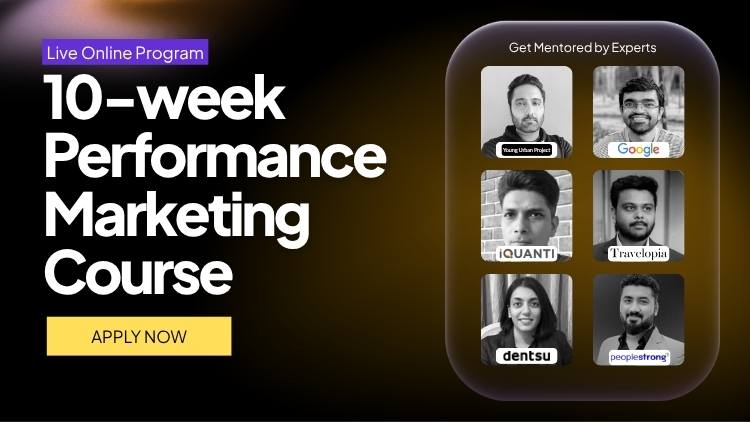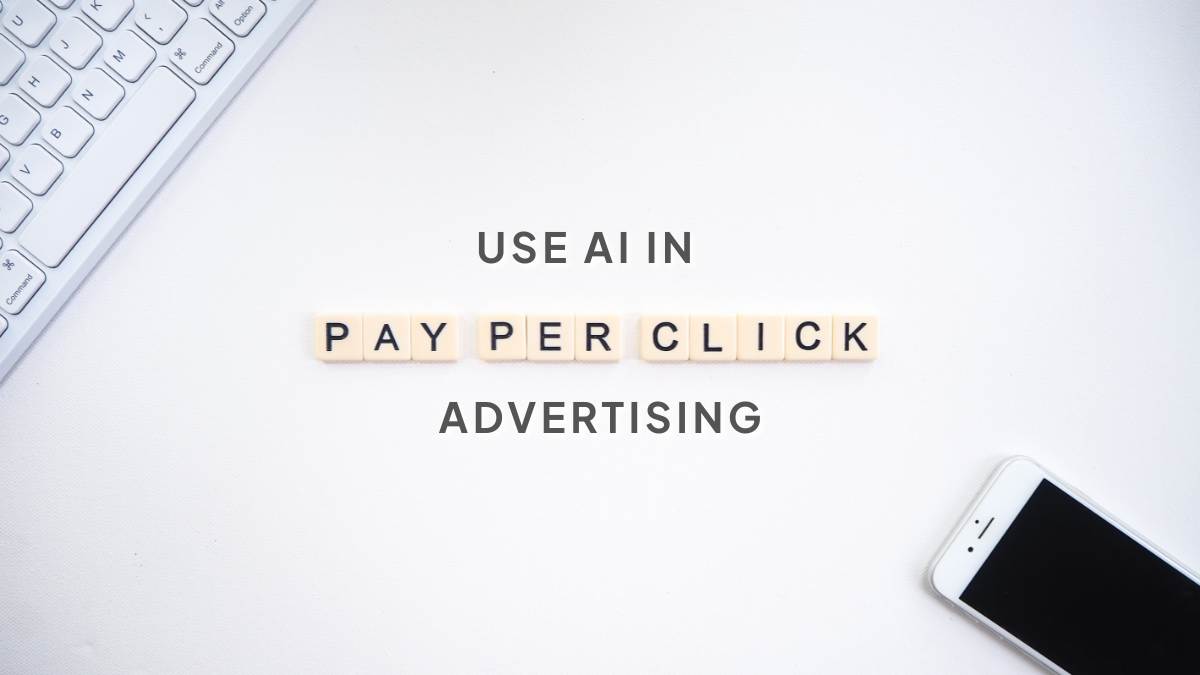If you’re trying to figure out how to use AI in PPC advertising, now’s a great time. Things have changed a lot lately. A few years ago, you had to do everything by hand, changing bids, testing ads, guessing what might work. It was kind of a grind.
Now, AI tools are doing a lot of that work for you. Not in a scary, robot-takes-over way, more like a helpful assistant that never sleeps. Your ad platforms can adjust budgets, test headlines, and even pick the best audience… all without you having to touch a thing.
And the best part? You don’t need to be a big brand with a huge team. Even small businesses or solo marketers can tap into this. Honestly, it’s kind of wild how far things have come.
Table of Contents
How Does AI Work in PPC Advertising?
Let’s keep this simple. AI in PPC is basically smart software that watches what’s happening in your campaigns and helps make better choices.
Some quick ways it works:
- It sees what’s working and what’s not.
- It tests different things faster than a human could.
- It tries to guess who might click or buy next.
- Sometimes it even writes parts of your ads.
For example, if a certain audience is clicking more but not buying, AI can lower bids or stop showing them your ad. If people in one city are converting more, it can send more budget there.
You don’t need to understand all the tech behind it. Just know it looks at patterns and adjusts your ads so you waste less money and (hopefully) make more. But yeah, it’s still good to check in and not trust it blindly.
Also Read: What is PPC in Digital Marketing?
Practical Ways to Use AI in PPC Advertising
So now that we’ve talked about what AI is doing in PPC, let’s get into the real stuff, how to actually use it in your campaigns. This is where the magic happens (and where most people either get great results… or get lost in the tools).
You don’t need to use everything at once. Pick one area, test it, and build from there. Let’s break it down.
1. Smarter Targeting & Audience Segmentation
One of the best things AI does is help you stop wasting money on the wrong people. It figures out who’s most likely to convert, not just who might click.
- Lookalike modeling is super useful. You upload a customer list, and platforms like Facebook Ads Manager use AI to find people like them. Not just demographically similar, but behavior-wise.
- Then there’s predictive targeting. This one’s wild. Based on past behavior (like pages viewed, time on site, even how fast someone scrolls), AI can decide who might buy soon, and shows them your ads at just the right time.
👉 Tools worth checking: ChatGPT (for persona ideas), Facebook Ads Manager, Revealbot (lets you automate audience rules without coding anything).
2. AI-Powered Bidding and Budgeting
If you’ve ever manually adjusted bids in Google Ads, you know how annoying it is. AI fixes that.
- Smart Bidding takes your conversion data and adjusts bids in real-time. Someone with high intent? Higher bid. Someone just browsing? Lower or skip.
- It also shifts budgets around throughout the day based on what’s converting right now.
Honestly, once you switch to smart bidding, you probably won’t go back. Just keep an eye on your goals, AI works best when you feed it clear conversion signals.
👉 Tools: Google Ads (Target ROAS, Max Conversions), Revealbot for automating budget changes based on live metrics.
Also Read: Right Budget Google Ads Campaign
3. Writing and Optimizing Ad Creatives with AI
Coming up with new ad copy every week? Yeah, AI can help here too.
- You can use it to write quick headlines, tweak CTAs, or even come up with emotional hooks. Not all of them will be amazing, but it gets you started.
- There’s also something called Dynamic Creative Optimization (DCO), basically, it mixes and matches versions of your ads to see what works best for each person. Like “choose your own ad adventure,” but automatic.
Don’t expect AI to fully understand your brand voice, though. You still need to guide it.
👉 Tools: Pencil, AdCreative.ai, Semrush Ad Copy Generator, or even Google’s built-in AI suggestions.
4. AI for PPC Keyword Research and Expansion
Old-school keyword research was all about spreadsheets. Now, AI can speed that up big time.
- It helps you find long-tail keywords people are actually searching, not just high-volume ones. These tend to convert better because the intent is clearer.
- You can also use AI to spot keyword gaps, places your competitors are ranking or bidding, but you’re not.
This can uncover opportunities you wouldn’t think of on your own.
👉 Tools: Semrush PPC Toolkit, Google Keyword Planner, PromoNavi (good for finding hidden gems).
5. Landing Page Optimization with AI
Sending traffic to a weak landing page? That’s like pouring water into a leaky bucket. AI can help fix that.
- With tools like Instapage or Unbounce, you can do dynamic content personalization, meaning your landing page adapts based on the user’s behavior or location.
- AI also looks at where people click, scroll, or drop off. This heatmap-style data can tell you what to fix or move around for better results.
You don’t need to be a designer. AI tools can give you suggestions, run split tests, and even write versions of your headline.
👉 Tools: Unbounce, Leadpages, Instapage (all solid options for non-tech folks).
6. AI for Campaign Monitoring, Optimization & Reporting
This one saves a ton of time.
- AI can spot weird stuff, like a sudden drop in CTR or a spike in CPC, and send alerts or pause ads automatically. That’s called anomaly detection.
- It can also break down conversion paths, so you see what steps led to a sale. Super useful for high-ticket funnels or B2B.
And the reports? AI can build dashboards that update on their own, so you don’t spend your Monday mornings pulling numbers anymore.
👉 Tools: Revealbot (again!), ConversionIQ, Rows (great for live dashboards without spreadsheets).
Using AI in PPC is powerful, but only if you know what to do with the data. Our Performance Marketing Course teaches you how to combine AI tools with human strategy to run smarter, high-ROI ad campaigns. Learn bidding, targeting, analytics & more, live, hands-on, and beginner-friendly.

Choosing the Right AI Tools for Your PPC Stack
Here’s the thing: there are a lot of AI tools out there. Some are great. Some are, well… not worth the money. So how do you pick the right ones?
Start by asking yourself: What do I actually need help with? If your problem is bad targeting, don’t get an ad copy tool. If you’re spending too much time adjusting budgets, go for automation.
Some stuff to think about:
- Your goals: Are you trying to scale fast? Save time? Fix a specific issue?
- Features that matter: Look for tools that plug into what you already use, like Google Ads, Meta, Shopify, etc. Bonus if it gives reports or works with rules you can tweak.
- Budget: Don’t jump straight into $300/month tools if you’re not even spending that much on ads. There are good free or cheaper versions out there.
Honestly, try one tool at a time. Don’t overload your stack with shiny things you won’t use.
Striking the Balance: AI vs Human Oversight
Let’s be real, AI can do a lot. But it’s not your creative director, strategist, or brand guardian. There’s a line where human thinking still matters. A lot.
Here’s what AI’s not great at (yet):
- Understanding your brand tone or voice in a deep way
- Coming up with big-picture strategy
- Handling emotional or crisis situations (like bad PR or cultural sensitivity)
So how do you keep control without micromanaging every click?
- Set the rules, then let AI run. But check in weekly.
- Creative ideation should still come from you or your team. Use AI to test variations, not build your entire campaign voice.
- During moments where public perception matters (like a product launch or mistake), don’t rely on bots. Step in.
In short: treat AI like a really smart assistant, not your boss.
Also Read: SEO vs PPC: Key Differences
Developing a Winning AI-Driven PPC Strategy
Okay, let’s pull it all together. Here’s how to actually build a campaign that uses AI smartly, without it becoming a mess.
1. Start with clear goals
Use the good ol’ SMART framework (Specific, Measurable, etc.). “Get more leads” is vague. “Lower CPA by 20% in 30 days” is something AI can help optimize.
2. Automate tasks, not decisions
Use AI to handle things like bidding, targeting, and creative testing. But the why behind the campaign? That’s still on you.
3. Use rules and workflows
Most platforms let you set triggers like “if CPA goes above ₹500, pause ad.” These small things add up and keep your campaigns in check.
4. A/B test like a machine
Let AI generate and rotate different versions. You’ll learn faster and stop wasting budget on duds.
5. Track, adjust, repeat
Look at the data weekly. What’s improving? What’s tanking? AI learns best when it gets feedback, so feed it clean, recent data.
The goal here isn’t to replace your marketing brain. It’s to free it up, so you can focus on strategy, creative ideas, and testing things AI can’t dream up (yet).
Expert Tips to Maximize AI’s Impact in PPC
Alright, now that you know the tools and how to use them, let’s talk about what actually works when using AI in real campaigns. These are simple lessons picked up from testing (and messing up) over time.
1. Don’t automate everything at once
Seriously, start small. Maybe automate bidding first. Then try AI for ad copy. Doing it all in one go? You’ll have no idea what’s helping and what’s hurting.
2. Use AI to test more, not do more
Think of AI as a fast tester. It can try 10 ad versions in the time it takes you to write 2. Let it run the numbers, then you pick the winners. It’s not about creating more, it’s about finding what works faster.
3. Let AI handle the data, you handle the message
AI’s great at crunching numbers. But it doesn’t get your customer’s emotions, problems, or dreams. You do. Use AI to serve your story, not write it from scratch.
4. Keep feeding it fresh data
If your AI tools are still optimizing based on a campaign from last year… you’re probably wasting money. Update your goals, creatives, and conversion data regularly. Once a quarter is a good rhythm.
Also Read: How to Become a Google Ads Specialist
Conclusion
AI isn’t here to take your job; it’s here to take the boring parts off your plate.
From setting smart bids to figuring out who to target, AI can seriously upgrade your PPC results… but only if you work with it, not just let it run wild. Keep an eye on things. Keep your message clear. And don’t forget, you know your customer better than any algorithm.
So what’s the next move?
Take a look at your current ad setup. What can you automate? What tools can save you time? Maybe it’s time for a mini audit of your PPC stack, and start plugging in AI where it actually helps.
You’ve got this. And if it gets messy? That’s part of the process.
FAQs: AI in PPC Advertising
Q1. How is AI different from automation in PPC advertising?
Good question. Automation just follows instructions. Like, “if this happens, do that.” But AI actually learns. It sees what’s working, tests stuff, and adjusts as it goes. It’s not just following rules, it’s figuring things out on the fly. Automation is fixed. AI is flexible.
Q2. Can small businesses afford to use AI in PPC?
Yep. You don’t need fancy software or big budgets. Tools like Google Smart Campaigns or even free versions of Semrush and PromoNavi give you AI features without charging anything extra. You just need to know what you want it to do.
Q3. Will AI completely replace human PPC managers?
Nope. Not anytime soon. AI can run the numbers and tweak things fast, but it doesn’t get strategy, emotions, or brand tone. People still need to decide what the campaign is about, why it matters, and who it’s for. That’s not something a machine can do well.
Q4. What’s the best AI tool for PPC beginners?
If you’re just starting, stick with tools built into the platforms you already use. Like Google’s Smart Bidding, Revealbot, or Semrush’s ad copy tools. They’re simple, don’t need coding, and you can get results without a big learning curve.
Q5. How do I know if AI is helping my campaigns?
Watch your numbers. Look at CPC, CTR, conversions, and overall ROI. If those improve after using AI tools, that’s a good sign. Also, most platforms will show you what parts of the campaign were optimized automatically, use those reports.
Q6. How often should I update or retrain my AI tools?
Every few months is smart. Especially if you launch new products or change your audience. Fresh data helps AI tools stay accurate. Aim for a quarterly update, or whenever you make a big change in your campaigns.

